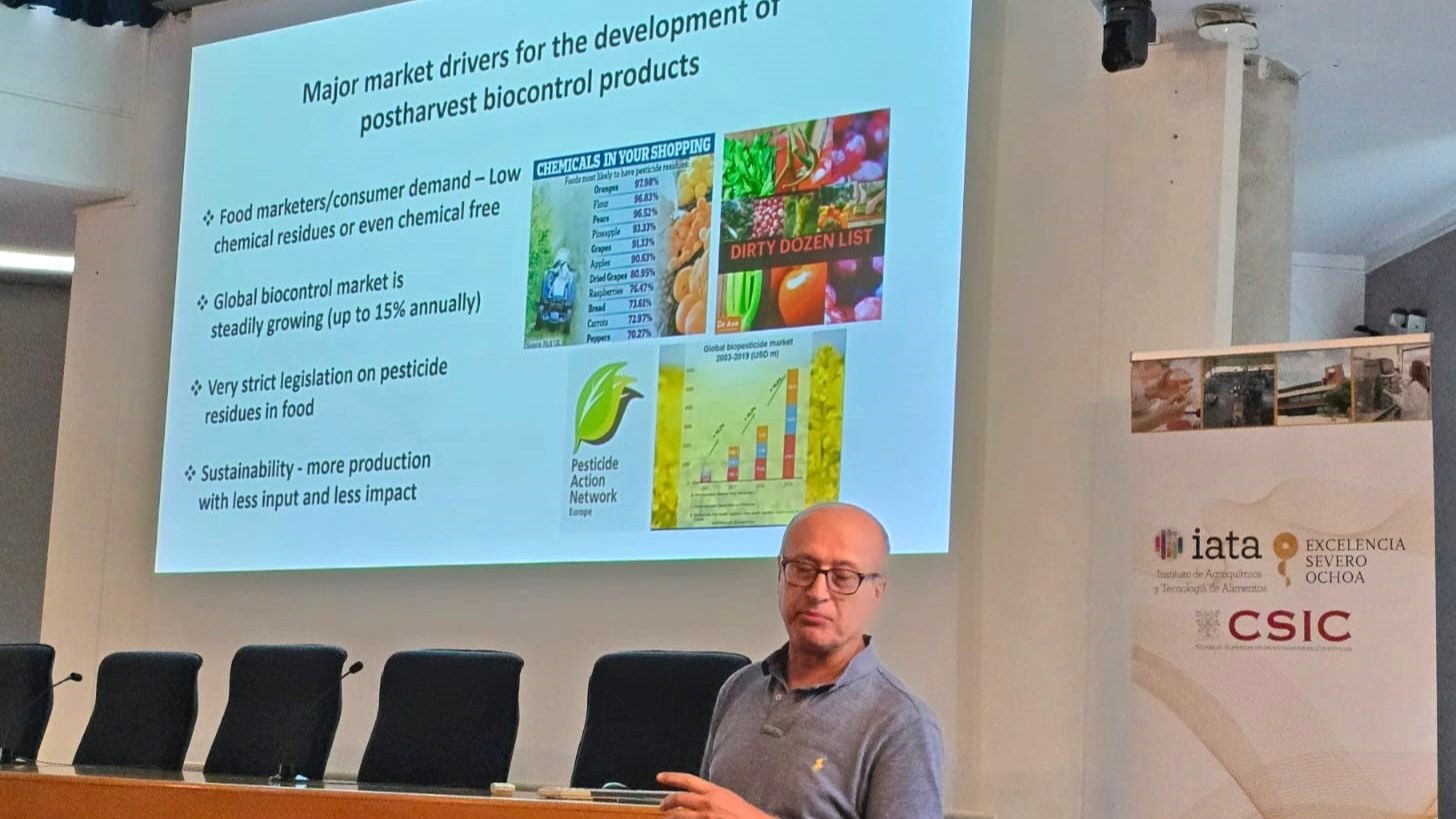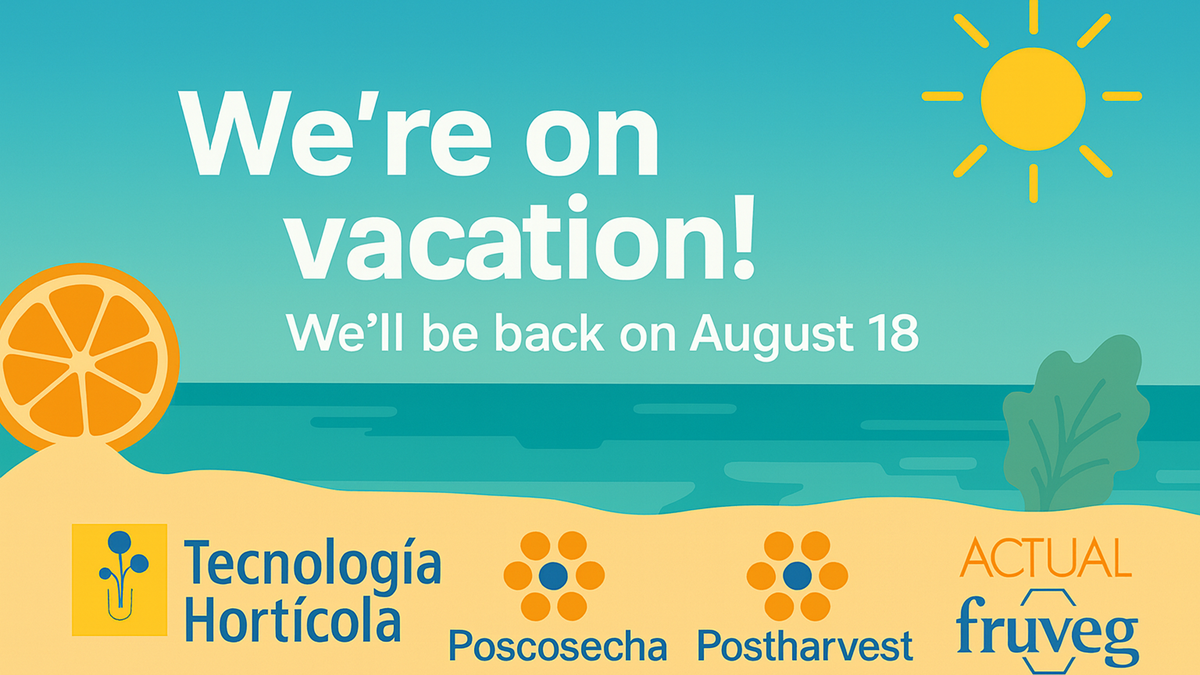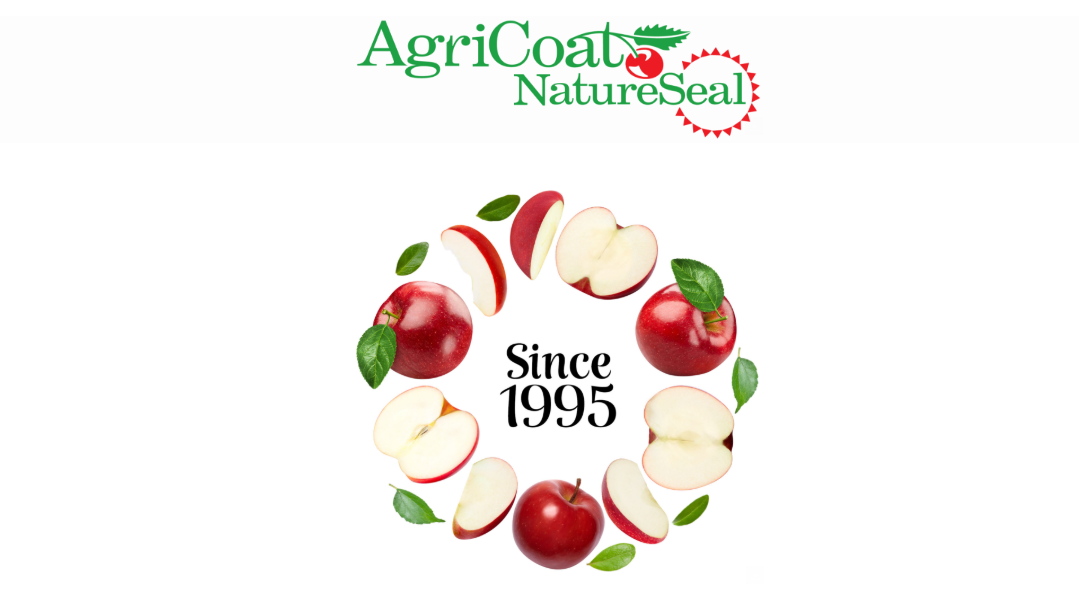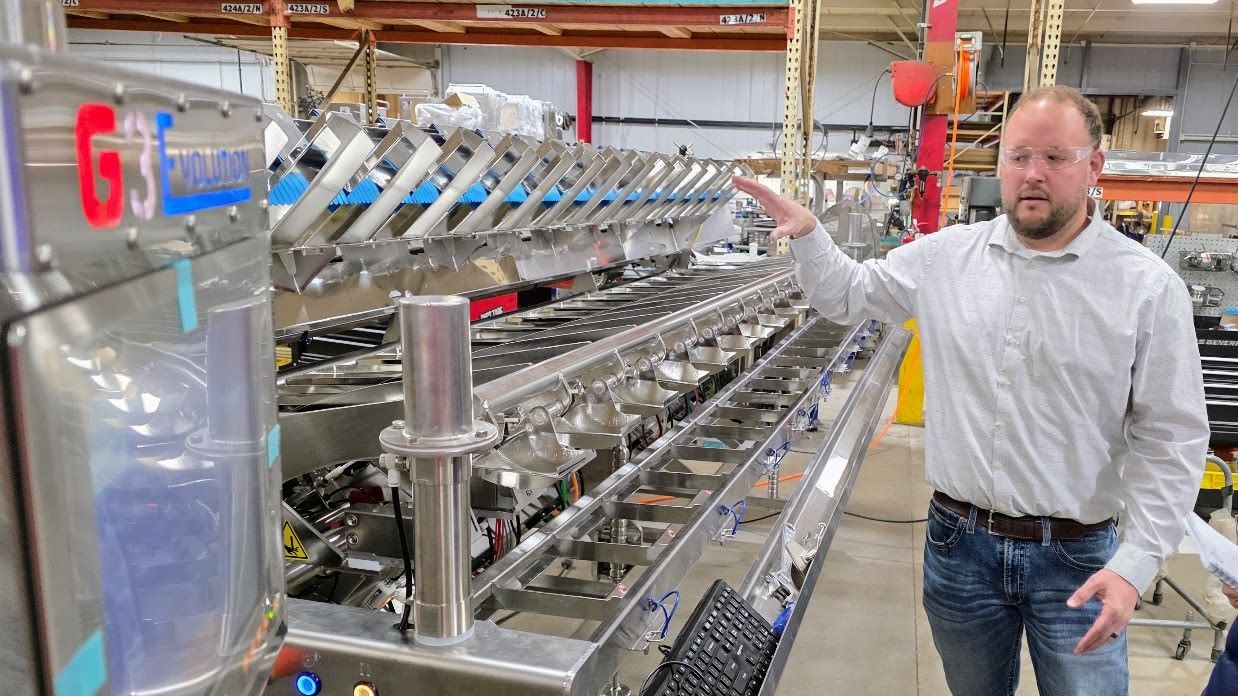News
The disease process moves from triangle to pyramid
ARO researcher Samir Droby presented a holistic approach to plant disease process at IATA, including the microbiome among the factors to consider, which opens new doors in control options

Traditionally, the factors influencing disease occurrence in both field and storage considered environment, host, and pathogen as primary actors, depicted in a triangle. Emerging knowledge in recent decades regarding the importance of the microbiome, which fruits and vegetables are not exempt from, has transformed the schema into a pyramid that includes them. Their inclusion, besides adding to the factors to consider, represents potential in control options.
Having the microbiome for control purposes is not a new approach. For several decades, there have been studies on microorganisms typically isolated from fruits capable of controlling pathogens of these fruits. Scaling up to commercial level and obtaining the necessary approvals pose challenges that few substances have been able to overcome. In Europe, Nexy by Decco, marketed in Spain, and Noli by Koppert, marketed in France, are examples.
Advancements in understanding the fruit microbiome, particularly in apples as an example, was the topic of the conference led by Samir Droby, professor in the Department of Phytopathology and Postharvest at the Hebrew University of Jerusalem and researcher at the Agricultural Research Organization (ARO) of Israel, at the headquarters of the Institute of Agrochemistry and Food Technology (IATA-CSIC) in Valencia, Spain, where he is currently based. Its title, "Exploring the fruit microbiome to enhance postharvest disease biocontrol strategies" (July 5, 2024).
Protocols per fruit
There are examples of preharvest application products causing reductions of 60 to 70% in postharvest losses; such is the case with the application of the yeast Metschnikowia. However, this requires a change in mentality. It is necessary to develop protocols for each fruit, as opposed to the more generalized application allowed by fungicides.
This involves recognizing that each situation constitutes a different pathosystem, requiring the development of different biocontrol protocols and an understanding of the etiologies of each of these diseases.
Biocontrol agents versus traditional fungicides
In addition to the difficulty of developing specific protocols, other factors include the speed of action of a plant protection product (the "silver bullet"), consistency in control, the long postharvest life of the product once formulated (the market demands more than two years), production costs, scaling, and formulation costs, as well as registration costs, including the information demanded by EFSA concerning safety and environmental risks, which can take up to five years to compile, and market size (these products are typically more specific than conventional ones).
Disease control as a process
Disease control has traditionally been considered a goal. Currently, in plant pathology, disease is viewed as a process that involves different steps, fruit physiology, and other variables that influence it.
The fruit, an ecological system
Moreover, what we call "fruit" is not a uniform object. It consists of different parts (skin, wounds, calyx, peduncle) and tissues, and the microorganisms that can live on them are also different, both on the surface and endophytic. It is estimated that a single fruit contains 11 million bacteria.
The fruit becomes a metaorganism, and the approach must be holobiont, taking all of them into account. The microbiome is a functional extension of the host's characteristics, influencing its physiology, shelf life, etc.
Microorganisms transform the disease triangle into a pyramid
Interactions among microorganisms
A healthy fruit is considered to be in a state of homeostasis; disease is a dysbiosis. Whether this phenomenon occurs depends on interactions among fungi, bacteria, yeasts, ... in other words, all microorganisms present in the fruit, in addition to the fruit's own characteristics and the environment.
Studies demonstrate many significant correlations between the actions of different organisms, involving co-exclusion or co-presence.
Fungi and bacteria on the fruit surface behave in social groups via cell-to-cell communication networks. It is necessary to investigate the impact of introducing a single microorganism on the fruit microbiota, which is the approach taken by Samir Droby's research group. An example is how the application of Metschnikowia fructicola affects the microbiome of Pink Lady apples, a study conducted by Antonio Biasi et al. from that group.
What is biocontrol?
Interactions among microorganisms define "biocontrol" as the sum of everything that occurs in the microbiome, including the antagonistic microorganism.
It is often thought that the introduced microorganism directly attacks the pathogen being controlled; however, this can be more complex due to all potential interactions.
Current biochemical and genomic tools allow us to "decipher the 4th dimension," collecting data on DNA, metatranscriptomics, metaproteomics, metabolomics, and analyzing them with the goal of achieving functional analysis.
This information is used to model and understand the relationships that can be established among microorganisms. In the conclusions of the presentation, Samir emphasizes the importance of the data model and the tools that this knowledge represents for developing control strategies.
A 2019 scientific article authored by the speaker in collaboration with Michael Wisniewski from the USDA is significantly titled "The Postharvest Microbiome: The Other Half of Sustainability," showing the potential tool that microorganisms represent in addressing society's sustainability needs and demands.
More options
Despite the potential of microorganisms as a control tool, given its complex and heavily regulated nature, it is unlikely that the supply of products in the market will increase drastically, at least in the short term. However, understanding allows us to consider their use as biomarkers, to help predict fruit storage potential alongside other factors to consider. A few years ago, a Dutch company offered a fruit lifespan prediction service based (I believe) on physiological markers of fruits. Perhaps it is possible to approach prediction based on current tools and more holistic approaches.
In any case, it is an unexplored world that enriches the tools available to preserve the quality of horticultural products.
(*) The Postharvest Microbiome: The Other Half of Sustainability. Michael Wisniewski y Samir Droby. Julio 2019 Biological Control 137(2):104025. https://doi.org/10.1016/j.biocontrol.2019.104025













